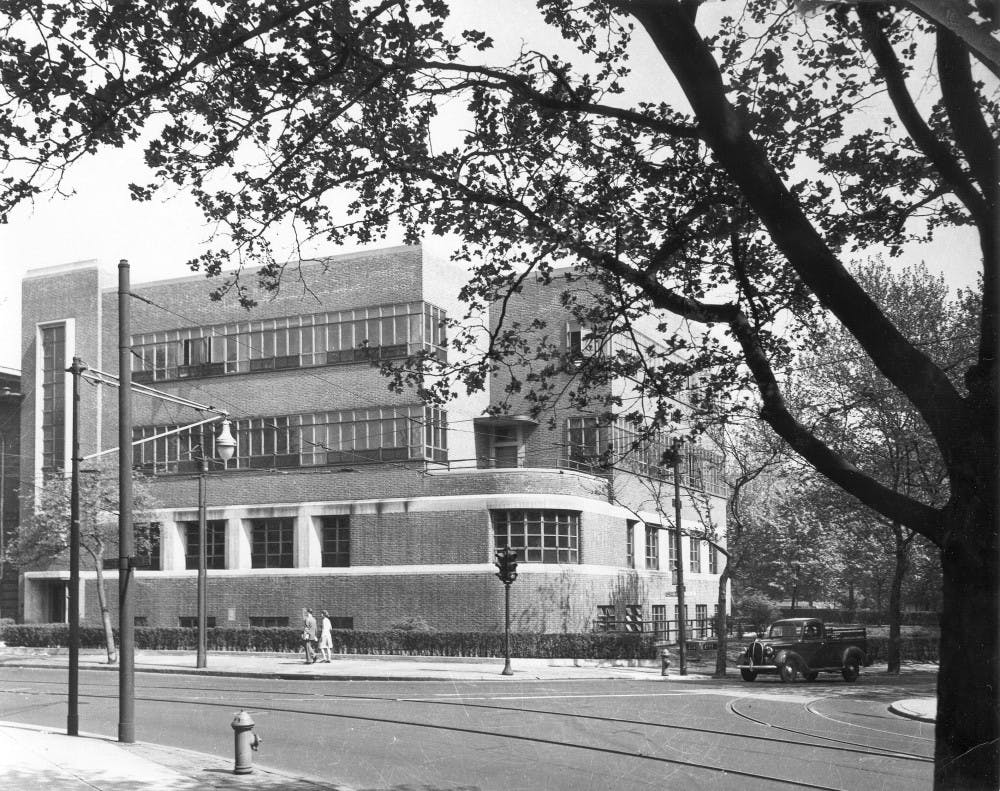Penn has produced its fair share of notable alumni and professors, but between Donald Trump and John Legend raking in the attention, little attention has been paid to the one person who has arguably shaped the entire city of Philadelphia: Paul Philippe Cret. An architecture professor in the School of Design for 34 years, Cret designed some of the most iconic monuments in Philadelphia. The Benjamin Franklin Bridge, the Rodin Museum—that’s all Cret.
Born in Lyon, Cret arrived in Philadelphia in 1903, where he was offered the position of assistant professor of Design. The early twentieth century was a period of ferment in American architectural education. Professional atmosphere and apprenticeship culture in higher education was gradually shifting towards an academic approach—because of this, Cret was not only an architect, but also an educator and scholar.
Over time, he established his own style, one that closely mirrored that of a French atelier, which is a private workshop where the artist and students worked together to produce designs. Aside from this studio, he lectured on the history of art and the philosophy of architecture. In the evenings, students were able to attend the additional ateliers he hosted. These were open to all practicing architects and draftsmen who hoped to develop advanced skills.
The early twentieth century was also a period in which burgeoning city growth was coming under the control of city planning. Belonging to a generation of architects who believed they had a civic responsibility, Cret treated architecture as a medium of public expression. Serving on a city–appointed art jury that weighed in on the design of public buildings, he also drew up many original designs himself. In these, he brought his French heritage of boulevards, vistas, monuments, public buildings, and gardens in hopes of transforming the relentless rectangular street patterns so characteristic of nineteenth–century American cities.

In 1907, he was appointed by the Fairmount Park Art Association to draw up the plan that became the Philadelphia Parkway—now the Benjamin Franklin Parkway. Cret, who designed the early plans of the Parkway as well as the Rodin Museum and the 2601 Parkway apartment building, also executed major design work on major Philly icons such as Rittenhouse Square, the Schuylkill River embankments, the original Barnes Foundation in nearby Merion, Pa., and numerous other city amenities. He also built many Philadelphia bridges, including the Delaware River Bridge (now the Benjamin Franklin Bridge), for many years the longest suspension bridge in the United States.
Cret's designs illustrated his conviction that architectural pieces should serve as public art that forms part of the city's landscape. Works were meant to be functional and modern in spirit, demonstrating his respect for the styles of his own time, but they were also rooted in his rich knowledge of the history of architectural design.
Having studied architecture at the École des Beaux–Arts, one of the most influential art schools in France, Cret drew upon the neoclassical elements—arched windows, pilastered facades, bas relief panels. But, as History of Art professor David Brownlee is quoted as saying in an August article in the Pennsylvania Gazette, once Cret arrived in the States, he dedicated himself to designing functional living spaces. A bridge of two worlds, he was an advocate for a new form of classicism that later led to radical attitudes embraced by Swiss modernist Le Corbusier, who believed architectural spaces should be “machine for living.” For Cret, architecture was also “a matter of solving problems, not of imitating styles,” Brownlee elaborated. “Its beauty came from proportion, not from ornament.”
This is so clearly seen in his work on the Rodin Museum. Although told to consider the Petit Trianon in Versailles while designing, Cret “diluted and simplified the classical details until they seemed more like abstract geometry than historical citations,” Brownlee further described in the article. In another case, the millionaire manse Barnes Foundation was also rooted in modernity in its lack of corridors and straight routes.
For Cret, modernism made its way into nearly all his work, which expanded past the city of Philadelphia. In D.C., the Pan American Union, Folger Shakespeare Library, Federal Reserve Board Building, and Cret's bridges and roads all bear witness to his skill. Elsewhere in Pennsylvania, he left behind the National Memorial Arch in Valley Forge National Historical Park, the Henry Avenue Bridge over the Wissahickon, and the Hershey Community Center Building. His work spans the country, even crossing the Atlantic with his Chateau–Thierry American Monument in France. There was no surprise then that his appointment in 1940 to the United States Commission on the Fine Arts was a fitting recognition of his role in American city planning.
In addition to his profound influence on young architects during his thirty–four years of teaching at Penn and his major contributions to the professional debates of his day, Cret’s own architectural designs have left an enduring mark. Many of his creations still stand in Philadelphia today, serving as functional monuments to the man who has shaped the architectural fabric of this city.







